Ivan Čuk
Editorial
Stewart N. Pritchard, Jillian E. Urban, Logan E. Miller, Laura Lintner & Joel D. Stitzel
AN ANALYSIS OF HEAD KINEMATICS IN WOMENS ARTISTIC GYMNASTICS
Olga Kyselovičová,Lucia Selecká, Adriana Krnáčová & Anita Lamošová
BIOMECHANICAL CHARACTERISTICS OF STAG LEAP WITH BACK BEND OF THE TRUNK: A CASE STUDY
Hounaida Akkari-Ghazouani, Bessem Mkaouer, Samiha Amara & Mokhtar Chtara
KINETIC AND KINEMATIC ANALYSIS OF THREE DIFFERENT EXECUTION MODES OF STAG LEAP WITH AND WITHOUT THROW- CATCH BALL IN RHYTHMIC GYMNASTICS
Thomas Lehmann, Annelie Lorz, Axel Schleichardt, Falk Naundorf, Klaus Knoll, Falko Eckardt, Kerstin Witte
A MULTI-BODY MODEL OF A SPRINGBOARD IN GYMNASTICS
Paula Barreiros Debien, Paulo Márcio de Oliveira, Thiago Ferreira Timoteo, Camila Ferezin, Maurício Gattás Bara Filho & Tim Gabbett
TRAINING LOAD, RECOVERY AND INJURIES IN ELITE RHYTHMIC GYMNASTS DURING MAIN COMPETITIVE PERIODS: A CASE STUDY
Joana Filipa Pereira de Sousa de Carvalho Barreto, Filipe Luís Martins Casanova, César José Duarte Peixoto
GAZE BEHAVIOUR IN ELITE GYMNASTS WHEN PERFORMING MINI-TRAMPOLINE AND MINI-TRAMPOLINE WITH VAULTING TABLE – A PILOT STUDY
Marjeta Kovač, Vedrana Sember in Maja Pajek
IMPLEMENTATION OF THE GYMNASTICS CURRICULUM IN THE FIRST THREE-YEAR CYCLE OF THE PRIMARY SCHOOL IN SLOVENIA
María Alejandra Ávalos, Ainoa Garde & Lilyan Vega
TECHNOLOGIES AND SELF-ASSESSMENT AS STRATEGIES FOR COLLABORATIVE GYMNASTIC LEARNING
Asma Amri-Dardari, Bessem Mkaouer, Sarra H. Nassib, Samiha Amara, Rachid Amri & Fatma Zohra Ben Salah
THE EFFECTS OF VIDEO MODELING AND SIMULATION ON TEACHING / LEARNING BASIC VAULTING JUMP ON THE VAULT TABLE
Burak Gündoğan, Erkan Demirkan, Erbil Murat Aydın & Abdüsselam Turgut
THE EFFECTS OF DIFFERENT GYMNASTICS TRAININGS ON BODY COMPOSITION AND SOME PERFORMANCE COMPONENTS IN ADULT MALE NON-GYMNASTS
Angeliki Mastrogianni, Maria Psychountaki & Olyvia Donti
SELF-PERCEPTIONS AND SELF-ESTEEM IN ADOLESCENT RHYTHMIC GYMNASTS: IS TRAINING LEVEL A DETERMINANT?
Vítor Ricci Costa, Renato Francisco Rodrigues Marques, Mauricio dos Santos Oliveira & Myrian Nunomura
“PUPPETS” IN WOMEN’S ARTISTIC GYMNASTICS: THE COACH-GYMNAST RELATIONSHIP FROM PIERRE BOURDIEU’S LENS
Vahid Saleh, Roghayyeh Afroundeh, Marefat Siahkouhian & Asadollah Asadi
THE EFFECT OF AN 8-WEEK ANAEROBIC GYMNASTICS TRAINING ON BDNF, VEGF, AND SOME PHYSIOLOGICAL CHARACTERISTICS IN CHILDREN
Lorena Nabanete dos Reis Furtado, Eliana de Toledo, Kizzy Fernandes Antualpa & Michele Viviene Carbinatto
BALLET MOVEMENTS IN RHYTHMIC GYMNASTICS ROUTINES: AN ANALISYS FROM THE LAST TWO CODE OF POINTS (2013-2016 and 2017-2020)
Anna Prikhodko, Olha Kolomiitseva & Vira Prykhodko
SOKOLSTVO IN UKRAINIAN REGIONS OF THE RUSSIAN EMPIRE: FROM ORIGIN TO DOWNFALL
Pauline Iglesias Vargas & André Mendes Capraro
THE PROFILE OF THE ACADEMIC PRODUCTION ON MEN’S ARTISTIC GYMNASTICS FROM THE WEB OF SCIENCE AND SCOPUS
Anton Gajdoš
Short Historical Notes XIX
ISCWAG - NATALIE BARKER-RUCHTI; WILLIAM SANDS
LETTERS TO EDITOR
Symposiums
Simpoziji
Ivan Čuk
Editorial
Dear friends,
These days our lives are run by COVID-19. Our gymnastic family mourns Dieter Hoffman, an excellent German coach and expert, a FIG Academy lecturer, who recently died of Covid-19. We do not know what comes next but I am certain we all want to go back to our normal life.
Despite many negative effects of Covid–19, it had a positive effect on our journal. Our authors wrote as many as16 articles for this issue which is a record for the journal.
We are all adjusting to new circumstances. As you probably already know, conferences will be held online. Bulgaria will host a symposium on rhythmic gymnastics and Portugal on gymnastics. For more detailed information please see the following pages. Please join the symposia and take an active part with your ideas and views!
For this issue our authors researched many different topics, including biomechanics, motor control, motor learning, theory of training, physiology, psychology, physical education, sociology and history, in relation to rhythmic and artistic gymnastics and trampolining.
Countries participating with articles include: USA, Slovakia, Tunisia, Germany, Brazil, Australia, Portugal, Slovenia, Spain, Turkey, Greece, Iran and Ukraine,
Anton Gajdoš provides a short historical note on Nina Bocharova, the Olympic Champion from Russia in WAG at the Olympics 1952 in Helsinki.
Our editorial board decided to make an exception and publish a letter – manifesto of International Socio-Cultural research group on WAG lead by Natalie Barker-Ruchti (USA) to the Editor and a comment on the letter by William Sands (USA). While we believe the letter and the comment present issues that may be important to our audiences, I’d like to stress that our journal remains focused on the publication of scientific articles presenting evidence-based solutions only. Nevertheless, there should be no doubt that our journal supports the United Nations Declaration of Human and Children Rights and believes its provisions should be respected.
Just to remind you, if you quote the Journal, its abbreviation on the Web of Knowledge is SCI GYMN J.
I wish you pleasant reading and a lot of inspiration for new research projects and articles.
Stewart N. Pritchard, Jillian E. Urban, Logan E. Miller, Laura Lintner & Joel D. Stitzel
AN ANALYSIS OF HEAD KINEMATICS IN WOMENS ARTISTIC GYMNASTICS
Concussions in gymnastics have scarcely been researched; however, current evidence suggests that concussion rates may be higher than previously reported due to underreporting among coaches, athletes, and parents. The purpose of this study was to outline a method for collecting head impact data in gymnastics, and to provide the first measurements of head impact exposure within gymnastics. Three optional level women’s artistic gymnasts (ages 11-16) were instrumented with a mouthpiece sensor that measured linear acceleration, rotational velocity, and rotational acceleration of the head during contact and aerial phases of skills performed during practice. Peak linear acceleration, peak rotational velocity, peak rotational acceleration, duration, and time to peak linear acceleration were calculated from sensor data. Kinematic data was time-synchronized to video and then sensor data was segmented into contact scenarios and skills characterized by the event rotation, apparatus, landing mat type, skill type, skill phase, landing stability, and body region contacted. The instrumented gymnasts were exposed to 1,394 contact scenarios (41 per gymnast per session), of which 114 (3.9 per gymnast per session) contained head contact. Peak kinematics varied across skill type, apparatuses, and landing mats. The median duration of impacts with head contact (177 ms) was longer than measured impacts in youth and collegiate level soccer. Results from this study help provide a foundation for future research that may seek to examine head impact exposure within gymnastics to better inform concussion prevention and post-concussion return to play protocols within the sport.
Keywords: head impact exposure, gymnastics, concussion, head injury.
Olga Kyselovičová,Lucia Selecká, Adriana Krnáčová & Anita Lamošová
BIOMECHANICAL CHARACTERISTICS OF STAG LEAP WITH BACK BEND OF THE TRUNK: A CASE STUDY
Biomechanical considerations as reflected in correct or incorrect technique, particularly in all gymnastic disciplines are more than undoubted. The stag leap as a variation of split leaps is one of the fundamental gymnastics skill and a key movement in the development of elite female gymnasts. The aim of the study was to analyse the kinematic characteristics of the stag leap with back bend of the trunk performed in rhythmic gymnastics and simultaneously find out the explosive power regarding this particular element. A member of Slovakian national team was involved in the study. Kinematic characteristics of the element were analysed. A capture system consisting of 8 infrared cameras were employed to collect the data. The explosive power of the lower limbs were diagnosed by a jump ergometer with 2 standardized tests: vertical counter-movement jump with the fixation of the arms and 10-second repetitive vertical jumps with arms movements. In addition, the explosive power of the lower limbs was also observed in the flight phase of the element. The results in 10-second repetitive jumps show the highest value of gymnast centre of mass 46.4 cm, contact time 0.195 s and the best active output in the flight phase 58.3 W.kg-1. While performing the difficulty element, slightly different data were observed due to the complexity and more demanding motor coordination of both upper and lower body segments: the highest value of gymnast centre of mass was 40.8 cm, contact time 0.209 s and the output in the active flight phase 52.8 W.kg-1.
Keywords: rhythmics, kinematic characteristics, explosive power, 10-second repetitive jumps, vertical counter-movement jump.
Hounaida Akkari-Ghazouani, Bessem Mkaouer, Samiha Amara & Mokhtar Chtara
KINETIC AND KINEMATIC ANALYSIS OF THREE DIFFERENT EXECUTION MODES OF STAG LEAP WITH AND WITHOUT THROW- CATCH BALL IN RHYTHMIC GYMNASTICS
Visual analysis of rhythmic gymnastics shows that the greatest difficulty lies in jumps. Performing jump with optimal speed, great amplitude, and better coordination and without any mistakes, does not depend only on the gymnast's capacity but also on the apparatus used, the jump made and the applied momentum. The objective was to study the qualities of strength, speed and flexibility developed during the three execution modes of stag leap with ring with and without throw-catch ball. Seven gymnasts from the national rhythmic gymnastics team aged between 15 to 21 years participated in this study. The protocol in making three stag leaps with rings consist of the following: the first without apparatus, the second with throwing ball during the chasse step, and the third with throwing ball at the time of pulse during stag leap with ring. The basic descriptive parameters and statistical significance of differences were determined by using the SPSS 20.0, statistical program for data processing. The results show a significant variation at p <0.05 in the execution factors when introducing apparatus such as, horizontal and vertical velocity, right knee angle, force, horizontal displacement of toe, the angular momentum of the centre of mass and angular velocity of right leg. This decrease differs according to the moment of throwing the ball. In conclusion, we can argue that introducing ball during the chasse step causes a change in the basic performance factors.
Keywords: kinetic, kinematic, stag leap, chasse step, throw-catch ball.
Thomas Lehmann, Annelie Lorz, Axel Schleichardt, Falk Naundorf, Klaus Knoll, Falko Eckardt, Kerstin Witte
A MULTI-BODY MODEL OF A SPRINGBOARD IN GYMNASTICS
In order to develop and optimize movements in gymnastics vault, knowledge of take-off velocity and angular momentum is important. Due to the short times of contact on the springboard, high-frequency kinemetric methods are very time-consuming for the determination of the take-off parameters. A multi-body model of a springboard was developed to determine the take-off forces to calculate specific take-off parameters. The Gymnova springboard was modeled using the simulation environment software alaska. The evaluation under dynamic conditions was carried out with a falling mass test, drop-jumps and forward handspring. The evaluation was done on the parameters of the ground reaction forces (GRF): force impact (p) and maximum vertical force (Fmax). For the drop-jump and forward handspring simulation the real measured acceleration of the upper board was given as input parameter in the model. When comparing the vertical displacement of the real and the modelled upper board, a discrepancy of 6.1 % can be observed. For the falling mass test differences for p=0.4 % and Fmax=28.2 % were achieved between the real board and the model. For typical loads for the gymnastics sport, drop-jumps have been used. There were realized differences of up to 8.4 % for Fmax and 6.8 % for p. For the final stage of the review, forward handstand vaults were examined. Horizontal and vertical forces were investigated. Through thorough evaluation on several stages, it was possible to develop a springboard model that is suitable to calculate the GRF under dynamic conditions successfully in 2-d. Therefore, the forces acting on the take-off position can be calculated. Take-off parameters can be determined from these forces. This evaluation also shows that the horizontal forces in especial have to be observed.
Keywords: artistic gymnastic, springboard, modeling, vault.
Paula Barreiros Debien, Paulo Márcio de Oliveira, Thiago Ferreira Timoteo, Camila Ferezin, Maurício Gattás Bara Filho & Tim Gabbett
TRAINING LOAD, RECOVERY AND INJURIES IN ELITE RHYTHMIC GYMNASTS DURING MAIN COMPETITIVE PERIODS: A CASE STUDY
Competitive periods are critical periods where elite rhythmic gymnasts experience higher training loads and insufficient recovery. The aim of this short report is to describe individual training load, recovery and injuries in elite group rhythmic gymnasts during competitive periods. Six gymnasts from the Brazilian senior rhythmic gymnastics group were monitored daily over a 126-day period comprising regular training and four competitions. Training load was measured using the session rating of perceived exertion (session-RPE). Daily load, chronic load, and acute:chronic workload ratio (ACWR) were assessed. The Total Quality Recovery (TQR) scale was used to monitor recovery and a 3-day rolling average (3RA) TQR was also measured. Injuries were diagnosed and reported by the medical staff and their reports were used in the analysis. Descriptive statistics were used. The gymnasts presented distinct daily load, ACWR, and recovery patterns, as well as injuries across the competitive periods. All athletes had rapid increase (“spike”) in load. Three athletes were underrecovered more than 60% of the time. Four athletes sustained five injuries during the time of the study (all lower limb overuse injuries, two severe, two mild and one slight). Individual factors such as age and chronic load could moderate how each gymnast responds to training and tolerates spikes in load. Moreover, injuries sustained during competitive periods appear to affect the short and long-term careers of gymnasts, as well as impair training and competition organization of the team.
Keywords: gymnastics, injury, ACWR, competition.
Joana Filipa Pereira de Sousa de Carvalho Barreto, Filipe Luís Martins Casanova, César José Duarte Peixoto
GAZE BEHAVIOUR IN ELITE GYMNASTS WHEN PERFORMING MINI-TRAMPOLINE AND MINI-TRAMPOLINE WITH VAULTING TABLE – A PILOT STUDY
Visual system provides information from the environment, leading gymnasts to improve performance. The question of what sources of visual information from the environment contribute to performance, remains unclear. This study aims to analyse visual behaviour, as areas of interest, fixated by Teamgym elite gymnasts during the performance of techniques on mini-trampoline and mini-trampoline with vaulting table. We hypothesised that: a) gymnasts would fixate areas of interest in the environment to visually perceive relevant information, b) fixations on the area of interest “landing mat” would occur during the last part of flight phase and landing. Three teamgym elite gymnasts performed three tasks on mini-trampoline and one task on mini-trampoline with vaulting table. The variables were: fixation duration (FD), areas of interest (AOIs), ratio between total fixation duration and total task duration (TFD/TD) and ratio between total fixation duration per AOI and total fixation duration (TFDA/TFD). Results showed that TFD/TD increased with the decreased of complexity degree for all tasks. Mini-trampoline was the most fixated AOI (except for straight barani out on mini-trampoline) while wall was the less fixated. The run-up zone was the most fixated zone. For the task on mini-trampoline with vaulting table, participants reduced the time spent fixating run-up zone and increased time spent fixating mini-trampoline and vaulting table. Landing mat was the only AOI that was fixated during the flight phase. Results suggest that gymnasts may adapt their visual strategy to the degree of complexity of the task, as reflected in the results of TFD/TD and TFDA/TFD.
Keywords: gymnastics, visual perception, eye-tracker
Marjeta Kovač, Vedrana Sember in Maja Pajek
IMPLEMENTATION OF THE GYMNASTICS CURRICULUM IN THE FIRST THREE-YEAR CYCLE OF THE PRIMARY SCHOOL IN SLOVENIA
Throughout the world, gymnastics is an essential part of physical education (PE) curricula, especially in the first years of schooling. In this period, PE is taught by the general teachers (GTs) with low levels of experience about how to teach gymnastics. Our study aimed to find out how GTs complied with the prescribed gymnastics curriculum contents. The sample included 90 GTs from 21 primary schools from Ljubljana, the capital of Slovenia. A self-administered questionnaire was designed to examine the opinions of GTs about some factors of importance and implementation of gymnastics contents on a five-level Likert scale. A one-way ANOVA, Tukey post hoc test, and Mann-Whitney U test were used in the data processing. GTs allocated more time to those contents of the PE curriculum that rank higher regarding the importance of child development and are easier to teach. They spent only 16.93 lessons on gymnastics per academic year, ranked gymnastics at fourth place (out of 7) regarding its importance for children's development, and gymnastics seemed to be the most challenging content to teach. Within gymnastic content, the least implemented elements were those mentioned as the most difficult to learn for children (acrobatics, hang and support, and vaults). GTs believed that teaching methods (4.29) were less important for successful gymnastics performance than children’s motor efficiency (4.73) and self-activity (4.57). The outcomes of this study may aid in the future updating of GT education study programmes and designing a creative system of continuous professional development.
Keywords: primary school, educational gymnastics, importance, difficulties, general teachers.
María Alejandra Ávalos, Ainoa Garde & Lilyan Vega
TECHNOLOGIES AND SELF-ASSESSMENT AS STRATEGIES FOR COLLABORATIVE GYMNASTIC LEARNING
The acrosport is an ideal content to work in physical education classes due to its cooperative and integrating characteristics and the multiple benefits it can bring to the students. The aim of this research is to analyze the perception of 81 students of High School after carrying out an acrosport unit using the technologies and involving the students in the evaluation process. For this, a qualitative methodology with descriptive character was used. The instrument for the collection data was the semi-structured interview where questions were addressed about the benefits and difficulties encountered in the development of the unit, as well as about the usefulness perceived by adolescents of the use of video during the development of the unit and self-evaluation. The qualitative data were coded according to the narrative content of the students and analysed with the AQUAD 7 programme. The results show that the students perceive benefits in terms of enjoyment and companionship in this practice. Regarding the difficulties encountered, the lack of time and the specific requirements for the development of this modality are the most outstanding aspects. Furthermore, the student’s value positively the use of video in the acrosport classes and the self-evaluation supported by rubrics. In this way, the practice of acrosport contributes numerous affective-social benefits, concluding in addition, that the use of the video and the inclusion of the students in the evaluation allow them to be participants of their teaching-learning process, being able to contribute to the formation of more critical and autonomous people.
Keywords: acrobatic gymnastics, rubric, video recording, learning management, High School.
Asma Amri-Dardari, Bessem Mkaouer, Sarra H. Nassib, Samiha Amara, Rachid Amri & Fatma Zohra Ben Salah
THE EFFECTS OF VIDEO MODELING AND SIMULATION ON TEACHING / LEARNING BASIC VAULTING JUMP ON THE VAULT TABLE
The purpose of this study was to compare the effects of different teaching / learning strategies (i.e., verbal feedback, video feedback with modeling, and video feedback with simulation) on performing basic vaulting skills on the vault table. Three male groups of undergraduate students in physical education (i.e., 135 students, divided into 3 groups of 45 subjects) took part in this study. The groups (i.e., traditional, modeling and simulation groups) were divided on equal terms; students are not gymnasts, have the same level and taught by the same teacher. All participants were pretested to determine initial skill level (i.e., direct piked vault). This study covers 24 stoop direct vault sessions, 21 learning and three evaluations spread over 12 weeks (i.e., 2 sessions per week). A video motion analysis (i.e., using Kinovea software) was used to evaluate direct piked vault skills/performance. The results indicate a better improvement of performance in the modeling group compared to the simulation and traditional groups (vault score, 11.80±1.22 pts, 10.85±1.50 pts and 9.01±1.30 pts, respectively with p<0.01). In addition, the analysis of delta-percentage revealed a considerable enhancements of technical performance in the modeling group (46.93%) compared to simulation (27.62%) and traditional (21.64%) groups. In conclusion, video feedback with model’s superposition had led to better learning improvements in vault jump compared with simulation and verbal feedback methods. The video return with the overlay of the model enabled a lot of basic skills learning improvement at the vault table.
Keywords: video feedback, modeling, simulation, learning, vault table, physical education.
Burak Gündoğan, Erkan Demirkan, Erbil Murat Aydın & Abdüsselam Turgut
THE EFFECTS OF DIFFERENT GYMNASTICS TRAININGS ON BODY COMPOSITION AND SOME PERFORMANCE COMPONENTS IN ADULT MALE NON-GYMNASTS
The aim of this study was to compare the effects of artistic and trampoline gymnastics training on body composition and some of the physical fitness components in adult non-gymnasts. Forty-eight adult non-gymnasts were randomly assigned to three groups: a trampoline gymnastics group (TG) (n = 16), an artistic gymnastics group (AG) (n = 16), and a control group (CG) (n = 16). Two of the group except the CG performed different gymnastics training, including artistic and trampoline gymnastics twice a week during 12 weeks. The control group performed only a warm-up exercise twice a week along the study. To determine the effects of each gymnastics training on body composition, Y dynamic balance test that including six postural tasks, vertical jump, standing long jump and two different flexibility tests, were performed before and after the study for all groups. The AG and TG were significantly (p<0,05) improved when it comes to all bio-motor abilities in adult non-gymnasts after 12 weeks of training. But the trampoline gymnastics exercises may be seen to be more efficient compared to the artistic gymnastics exercises. The trampoline exercises may be recommended as an alternative mode of exercise for improving bio-motor abilities.
Keywords: gymnastics, balance, vertical jump, standing long jump, flexibility.
Angeliki Mastrogianni, Maria Psychountaki & Olyvia Donti
SELF-PERCEPTIONS AND SELF-ESTEEM IN ADOLESCENT RHYTHMIC GYMNASTS: IS TRAINING LEVEL A DETERMINANT?
The purpose of this study was to examine Self-Perceptions and Self-Esteem in adolescent rhythmic gymnasts of different training levels. One hundred female rhythmic gymnasts (32 competitive and 68 recreational level gymnasts), aged 13-15 years, participated in this study. Participants’ Self-Perception and Self-esteem were evaluated through the Greek version of Harter’s Self-Perception Profile for Adolescents (Harter, 1986;2012; Makri-Mpotsari, 2001) which measures nine specific domains of self-perception (Scholastic Competence, Relations with Peers, Relations with Parents, Mathematics Competence, Athletic Competence, Physical Appearance, Language Competence, Behavioral Conduct, Close Friends) consisting of 5-items each. The inventory also includes a ten-item Global Self-Worth scale that measures Self-Esteem. In addition, gymnasts provided information on their training. Competitive level gymnasts scored higher than recreational in the domain of Relations with Parents (p=0.027, d=0.50) and in Global Self-Worth (p=0.046, d=0.45). No differences were found between groups in other self-perception domains (p=0.068 to 0.611, d=0.41 to 0.10). Engaging in competitive sport may enhance adolescent athletes’ Self-Esteem and it is likely that this engagement strengthens the relations of the gymnasts with their parents. Further research is required on the association between training level and Self-Perception domains, and in particular in the case of adolescent female athletes.
Keywords: self-concept, adolescence, personality traits, assessment, rhythmic gymnastics, relations with parents.
Vítor Ricci Costa, Renato Francisco Rodrigues Marques, Mauricio dos Santos Oliveira & Myrian Nunomura
“PUPPETS” IN WOMEN’S ARTISTIC GYMNASTICS: THE COACH-GYMNAST RELATIONSHIP FROM PIERRE BOURDIEU’S LENS
In Women's Artistic Gymnastics (WAG), athletes can be coach dependent, becoming submissive and this scenario may reflect subordination, harassment and abuse. This is worrying, because gymnasts are usually children. However, we argue that coach conduct depends on complex interactions. Thus, we analyzed how the coach-gymnast relationship is built. We used Pierre Bourdieu's categories to argue our reflections. We identified that the domination forms in the coach-gymnast relationship are responsible for shaping long-lasting dispositions, triggered by a process marked by the inculcation and embodiment of certain practices. Thus, gymnasts develop a class habitus that reproduces and legitimates the logic of this field. Our appropriation of Bourdieu's lens has shown that the gymnasts are at a disadvantage in relation to the coaches and to the system. Therefore, these structures should not demand early outcomes, but allow gymnasts to decide whether they want to continue in this “game of domination”.
Keywords: Pierre Bourdieu, theory of fields, women’s artistic gymnastics, sociology of sport.
Vahid Saleh, Roghayyeh Afroundeh, Marefat Siahkouhian & Asadollah Asadi
THE EFFECT OF AN 8-WEEK ANAEROBIC GYMNASTICS TRAINING ON BDNF, VEGF, AND SOME PHYSIOLOGICAL CHARACTERISTICS IN CHILDREN
The purpose of the present study was to observe changes in levels of brain-derived neurotrophic factor (BDNF), vascular endothelial growth factor (VEGF), resting metabolic rate (RMR) and maximum oxygen consumption (VO2max) in the gymnast children after an anaerobic gymnastics training program. Thirty beginner gymnasts aged 8-12 years old were randomly assigned to control (n = 15) and experimental (n = 15) groups. The anaerobic gymnastics training was conducted for 8 weeks, 3 times per a week. Each session lasted 45 minutes: 10 min warm-up, 30 min core exercise, and 5 min cool down. The anthropometric and body composition of subjects were measured and growth factors were measured by using human BDNF and VEGF PicoKine™ ELISA Kit and analysis was performed using sandwich enzyme-linked immunosorbent assay (Morland et al.) before and after the intervention, and VO2max, maximum heart rate and RMR were measured using a gas analyzer. At the baseline there were not any significant differences between both groups (p>0.05). But in the post-test, a significant difference was observed for BDNF(p=0.02) and VEGF(p=0.018) values between the two groups. Within-group there was a decrease in the value of the maximum heart rate indicator (P<0.05) and VO2max and BDNF increased significantly after an intervention (P<0.05). In conclusion, the results of the present study suggest that anaerobic gymnastic training increases the level of salivary BDNF and VEGF in children. These types of exercises may also improve cardiorespiratory fitness in children.
Keywords: children, neurotropic factors, growth factors.
Lorena Nabanete dos Reis Furtado, Eliana de Toledo, Kizzy Fernandes Antualpa & Michele Viviene Carbinatto
BALLET MOVEMENTS IN RHYTHMIC GYMNASTICS ROUTINES: AN ANALISYS FROM THE LAST TWO CODE OF POINTS (2013-2016 and 2017-2020)
Ballet is a world-renowned dance and its movements can be seen in athletes’ education and training systems from various sports, especially those considered artistic sport, such as rhythmic gymnastics (RG). The competition system of this sport is driven by a Code of Points (CoP) that is established every four years and, although it has some changes during the years, remains in its essence clearly influenced by dance aspects as well as Ballet movements in its performance. Thus, the purpose of this research was to analyze the Ballet movements in RG routines in the 2013-2016 and 2017-2020 Olympic cycles, in order to further understand the relationship between RG and Ballet and compare them in two different RG Code of Points. This was a quantitative research that analyzed 24 RG routines performed at RG World Championship (2013 and 2019) recorded and posted at one of the International Gymnastics Federation’s official social media websites. Results show that: a. there was no significant difference between the years (p ≥ 0,05), but the average of Ballet movements in the four apparatus routines in 2013 was higher than 2019; b. although the difference was not significant, the analysis of the magnitude of the effect size showed a small difference for ball (0.68) and clubs (0.29) and moderate for hoop (0.97) and ribbon (0.74); c. Ballet movements performed during Apparatus Difficulties (AD) and Dynamics Elements of Rotation (R) increased; those performed as connecting elements decreased.
Keywords: gymnastics, ghoreography, training, ballet movements.
Anna Prikhodko, Olha Kolomiitseva & Vira Prykhodko
SOKOLSTVO IN UKRAINIAN REGIONS OF THE RUSSIAN EMPIRE: FROM ORIGIN TO DOWNFALL
The purpose of this study is to advance a better insight into the history of Sokolstvo (Sokol movement) in the Ukraine within the territorial borders of the Russian Empire, and the variety of reasons for its origin and downfall. Slavic origin of Sokolstvo, the activity of supporters of Sokol gymnastics (SG) in the popularization of Sokol idea and, a gradual rapprochement of supporters of the two opposing areas of reforming Russia for further development began (“Slavophiles” and “Westerners”) contributed to the emergence and rapid development of the Sokol movement in the Ukrainian regions of Russia. In the 90s of the 19th century, SG began to be cultivated in the Sokol units of gymnastic societies, since 1907 independent institutions began to open. By World War I, Sokol gymnastic societies (SGS) in Ukraine were the largest group. SGS constantly trained instructors, but the majority of SG teachers were foreigners, Czech by nationality. SG was officially introduced into the military training of the army and the curricula of secondary schools and cadet corps. Sokol events were a significant part of the public life of many Ukrainian cities. Representatives of Ukrainian regional societies became members of the Board of the Union of the Russian Sokol, founded in 1910. The crisis of the Sokolstvo began in the years of the World War I due to the growth of xenophobic attitudes. During the years of Soviet power, the Sokol were accused of a bourgeois orientation, recognized as the “hotbed of counter-revolution” and banned in 1923.
Keywords: Sokol, gymnastics, Russian Empire, Ukraine.
Pauline Iglesias Vargas & André Mendes Capraro
THE PROFILE OF THE ACADEMIC PRODUCTION ON MEN’S ARTISTIC GYMNASTICS FROM THE WEB OF SCIENCE AND SCOPUS
The objective of this study was to describe the scientific production on men’s artistic gymnastics (MAG) in journals indexed on the Scopus and Web of Science platforms. To this end, we searched on both platforms for the keywords “men’s artistic gymnastics” and "male artistic gymnastics", with a non-specified date range. After applying the exclusion criteria, 52 scientific articles were found, distributed between 1994 and 2019. The year with the highest number of publications so far is 2018, with emphasis on the period between 2014 and 2018. The authors who contributed the most were Maurice Yeadon and Michael Hiley (both from British universities), Marco Bortoleto (from Brazil), and Ivan Čuk (from Slovenia). There is a predominance of MAG-related articles in the Science of Gymnastics Journal (21%), followed by the Journal of Biomechanics (7%). The articles deal with the biomechanics of gymnastics (34%), the rules of the sport and its judging (19%), the social, historical and political aspects of gymnastics (14%), morphological characteristics of athletes (10%), athletes’ health (10%), gymnastics training aspects (8%), and finally, analyses of athletes’ age over the years (6%).
Keywords: scientific production, bibliometric, web of science, scopus.
Anton Gajdoš
Short Historical Notes XIX
ISCWAG - NATALIE BARKER-RUCHTI; WILLIAM SANDS
LETTERS TO EDITOR
SCGYM 12 3 2020 letters to editor
Symposiums
Simpoziji





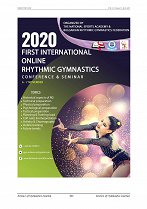
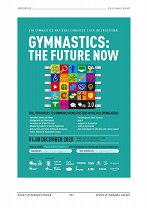







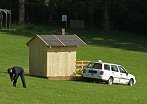
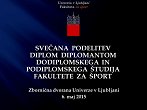



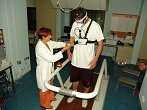



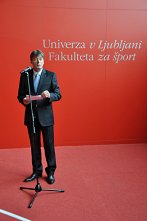
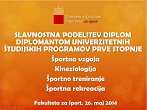


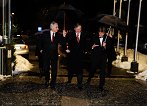


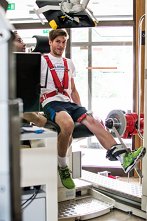


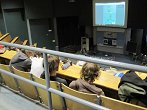


.png)